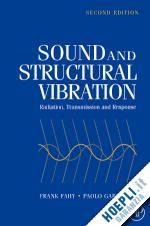The first edition of Sound and Structural Vibration was written in the early 1980s. Since then, two major developments have taken place in the field of vibroacoustics. Powerful computational methods and procedures for the numerical analysis of structural vibration, acoustical fields and acoustical interactions between fluids and structures have been developed and these are now universally employed by researchers, consultants and industrial organisations. Advances in signal processing systems and algorithms, in transducers, and in structural materials and forms of construction, have facilitated the development of practical means of applying active and adaptive control systems to structures for the purposes of reducing or modifying structural vibration and the associated sound radiation and transmission.
In this greatly expanded and extensively revised edition, the authors have retained most of the analytically based material that forms the pedagogical content of the first edition, and have expanded it to present the theoretical foundations of modern numerical analysis. Application of the latter is illustrated by examples that have been chosen to complement the analytical approaches to solving fairly simple problems of sound radiation, transmission and fluid-structural coupling that are presented in the first edition. The number of examples of experimental data that relate to the theoretical content, and illustrate important features of vibroacoustic interaction, has been augmented by the inclusion of a selection from the vast amount of material published during the past twenty five years. The final chapter on the active control of sound and vibration has no precursor in the first edition.
* Covers theoretical approaches to modeling and analysis
* Highly applicable to challenges in industry and academia
* For engineering students to use throughout their career











